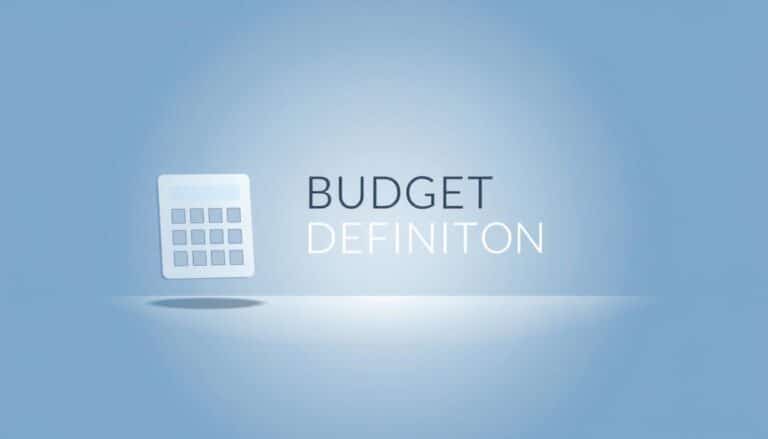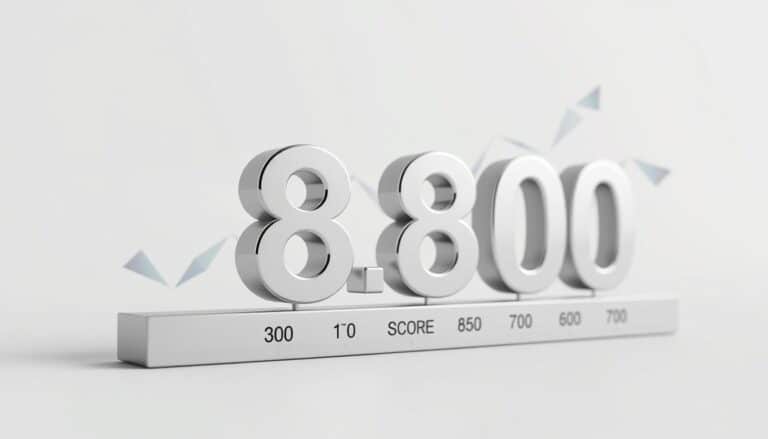Life is full of surprises, and unexpected costs can pop up anytime. A sudden car repair, medical bill, or job loss can really hurt your wallet. A financial safety net can help ease this financial stress.
An emergency fund acts as a financial cushion. It’s a stash of money for when things get tough. It helps cover basic needs during unexpected times. This way, you can avoid debt and keep your finances stable.
Key Takeaways
- An emergency fund is a key part of financial planning.
- It offers a safety net for sudden events like medical emergencies or job loss.
- Having an emergency fund can prevent debt and keep your finances stable.
- A good emergency fund can lessen financial worries.
- It’s important to save enough for emergencies.
What Is an Emergency Fund?
Related content:
You will stay on the same website.
Having an emergency fund is key to being financially ready. It acts as a safety net against sudden expenses and financial downturns.
Definition and Purpose
An emergency fund is a stash of money for unexpected costs or emergencies. Its main goal is to keep you financially afloat during tough times without debt. It’s not for long-term savings or investments but for emergencies only.
Key characteristics of an emergency fund include:
- Liquidity: The funds should be easily accessible.
- Low Risk: Investments should be low-risk to avoid potential losses.
- Separate Account: It’s advisable to keep the emergency fund in a separate account from your everyday spending money.
Importance of Having One
An emergency fund is crucial for financial stability. It brings peace of mind and security, helping you handle life’s surprises without financial worry. It can help with job loss, medical emergencies, or urgent repairs, avoiding high-interest debt.
The benefits of an emergency fund are multifaceted:
- Reduces financial stress by providing a safety net.
- Prevents debt accumulation during emergencies.
- Allows for quick response to unexpected expenses.
In short, an emergency fund is a vital part of a solid financial plan. It prepares you for the unexpected, protecting your financial health.
Why Every Individual Needs an Emergency Fund
An emergency fund is key to a solid financial plan. It protects you from life’s surprises, helping you pay for unexpected costs without debt.
Financial Security
Having an emergency fund keeps your finances safe. It helps you handle sudden bills, like car repairs or medical expenses, without messing up your budget. As Suze Orman, a top financial advisor, noted,
“A good financial plan is not just about saving for the future, but also about being prepared for the unexpected.”
This safety net can make a big difference in tough times.
It also stops you from using your retirement savings for emergencies. This keeps your long-term financial health safe.
Peace of Mind
An emergency fund also brings peace of mind. It lets you know you’re ready for any financial surprise. As Warren Buffett said,
“Price is what you pay. Value is what you get.”
In this case, the emergency fund’s value is in the calm it brings.
With an emergency fund, you can handle sudden costs without worry. This lets you keep your eye on your long-term goals. It’s about being ready for life’s surprises, so you’re never caught off guard.
How Much Should You Save in an Emergency Fund?
The amount you should save in an emergency fund depends on several personal financial factors.
It’s important to understand these factors to find the right savings amount for your situation.
General Guidelines
Financial advisors often suggest saving enough for three to six months of living expenses.
This is a good starting point, but your actual savings may differ.
For example, if you spend $3,000 a month, aim to save between $9,000 and $18,000.
Factors to Consider
Several factors can affect how much you should save:
- Job Security: If your job is unstable, save more.
- Dependents: If you have dependents, like kids or elderly relatives, you’ll need to save more.
- Health and Insurance: Medical costs can be high. Having good health insurance can help you save less.
| Monthly Expenses | 3 Months Savings | 6 Months Savings |
|---|---|---|
| $2,000 | $6,000 | $12,000 |
| $3,000 | $9,000 | $18,000 |
| $4,000 | $12,000 | $24,000 |
Where to Keep Your Emergency Fund
The place you choose for your emergency fund matters a lot. It’s not just about saving money. It’s also about where you save it. The right account can help your money grow and be ready when you need it.
Think about accounts that are easy to get to, safe, and grow your money. High-yield savings accounts and money market accounts are good choices.
High-Yield Savings Accounts
High-yield savings accounts are great for emergency funds. They have higher interest rates than regular savings accounts. This means your money can grow over time without taking big risks.
Benefits of High-Yield Savings Accounts:
- Liquidity: You can get your money when you need it.
- Low Risk: They are usually insured by the FDIC or NCUA.
- Higher Interest: You earn more interest than with a standard savings account.
For example, a high-yield savings account might give you a 2.0% APY. That’s a lot more than the 0.1% APY of a regular savings account. This difference can really add up over time.
Money Market Accounts
Money market accounts are also good for emergency funds. They often have debit cards or checks, making it easy to get your money.
Benefits of Money Market Accounts:
- Earnings: They usually have competitive interest rates.
- Flexibility: Many have check-writing privileges and debit cards.
- FDIC Insurance: Most money market accounts are insured, protecting your money.
| Account Type | Interest Rate | Liquidity | Risk Level |
|---|---|---|---|
| High-Yield Savings | 2.0% APY | High | Low |
| Money Market | 1.8% APY | High | Low |
| Traditional Savings | 0.1% APY | High | Low |
When choosing between high-yield savings and money market accounts, think about what you need. Both are safe places to keep your emergency fund and earn interest.
Common Misconceptions About Emergency Funds
Many myths surround emergency funds, which can harm our financial health. It’s important to know the real deal about these funds for good financial planning.
One myth is that emergency funds are just for when you lose your job. While job loss is a big reason to use them, they’re also for other sudden costs. This includes medical emergencies or urgent home repairs.
It’s Just for Unemployment
The belief that emergency funds are only for job loss is too narrow. In truth, they act as a safety net against many financial surprises. They can help with car fixes, medical bills, or other unexpected costs that can pop up anytime.
You Only Need a Small Amount
Another myth is that a small emergency fund is enough. But experts usually suggest saving enough to cover three to six months of living costs. The right amount depends on your job security, health, and family needs.
Knowing the real purpose and size of an emergency fund helps us face life’s surprises better. This knowledge is essential for using emergency funds wisely as part of a solid financial plan.
When to Use Your Emergency Fund
Emergency funds act as a financial safety net for unexpected events. They help people get through hard times without debt. Knowing when to use this fund is key to keeping your finances stable.
Unexpected Medical Expenses
One main reason to use your emergency fund is for unexpected medical costs. This includes hospital bills, meds, or emergency surgeries. Medical emergencies can be very expensive and unpredictable, so having savings is crucial.
Job Loss or Salary Reduction
Job loss or a big cut in salary is another good reason to use your emergency fund. It can help pay for things like rent, utilities, and food until you’re financially stable again.
It’s important to think carefully about your finances before using your emergency fund for job loss or salary cut.
Urgent Home Repairs
Urgent home repairs, like fixing a leaky roof or a broken boiler, are also valid reasons to use your emergency fund. These repairs are needed to keep your home safe and livable.
It’s important to prioritize your financial safety and security when deciding to use your emergency fund for home repairs.
Understanding when to use your emergency fund helps you prepare for life’s surprises. With emergency fund savings tips, you can boost your financial strength.
How to Start Building an Emergency Fund
Starting an emergency fund is a smart move for financial stability. It’s about taking steps to save money for unexpected costs and tough times.
Set a Savings Goal
First, figure out how much you need to save. Aim to save three to six months’ worth of living costs. Think about your must-haves, like:
- Rent or mortgage
- Utilities and groceries
- Transportation costs
- Minimum payments on debts
- Insurance premiums
An emergency fund calculator can make this easier. It helps you add up your monthly bills and find out how much to save.
Automate Your Savings
After setting your goal, automate your savings. Here’s how:
- Set up automatic transfers from your checking to savings or money market.
- Use employer-matched retirement accounts to grow your savings.
- Try a savings app that rounds up your purchases and saves the change.
Automating your savings makes it easy to reach your goal without much effort. It’s a powerful strategy for building a strong emergency fund.
Stick to these steps and stay disciplined. You’ll build a big emergency fund that keeps you financially safe and secure.
Strategies for Adding to Your Emergency Fund
To build a strong financial safety net, it’s key to use good strategies for adding to your emergency fund. This means saving money in a way that’s good for your finances.
Budgeting for Savings
One great way to grow your emergency fund is by adding savings to your budget. Treat your savings like you would rent or utilities.
- Find ways to cut back on things you don’t need.
- Set aside a specific amount for savings each month.
- Follow the 50/30/20 rule: 50% for needs, 30% for wants, and 20% for saving and debt.
By making savings a priority, you’ll keep adding to your emergency fund. Automating your savings helps by moving money from checking to savings automatically.
Utilizing Windfalls
Another way to boost your emergency fund is by using windfalls. Windfalls are unexpected money, like tax refunds or bonuses.
“A windfall can provide a significant boost to your emergency fund, helping you reach your savings goal more quickly.”
Try to put some or all of any windfall towards your emergency fund. This can add a lot to your savings, making you more financially secure.
Along with budgeting and using windfalls, regularly reviewing and adjusting your emergency fund is important. This keeps it in line with your financial needs and acts as a good safety net.
Differences Between Emergency Funds and Other Savings
It’s key to know the difference between emergency funds and other savings goals. Both are crucial, but they have different roles and are managed in unique ways.
Emergency Fund vs. Vacation Fund
An emergency fund helps cover sudden costs like car repairs or medical bills. A vacation fund, on the other hand, is for a planned trip or vacation.
Emergency funds are kept in easy-to-access accounts. This way, you can get money quickly when you need it. Vacation funds, while saved for a special trip, can be in accounts that earn more interest. But, the money is meant for a non-essential purpose.
Emergency Fund vs. Retirement Savings
Another important difference is between emergency funds and retirement savings. Retirement savings are for building a future nest egg, often through 401(k)s or IRAs.
The importance of emergency funds is clear when you think about needing cash right away. Unlike retirement savings, which you can’t touch until retirement, emergency funds offer quick access to cash for unexpected events.
In short, while both emergency funds and other savings goals are essential, they have different roles. Emergency funds handle unexpected costs, vacation funds are for leisure, and retirement savings are for long-term security.
How to Evaluate and Adjust Your Fund Over Time
To keep your emergency fund strong, you need to check it often. Building an emergency fund is not just a one-time job. It’s a continuous process to match your changing financial needs.
Assessing Financial Needs
When you check your financial health, think about your income, bills, debts, and family. Make sure your emergency fund can cover 3-6 months of living costs.
- Look at your monthly bills to figure out what you need for basic expenses.
- Think about any changes in your income or bills that could affect your money situation.
- Remember any family members who count on you for money.
| Financial Factor | Considerations | Impact on Emergency Fund |
|---|---|---|
| Income | Stability, potential for reduction | Having a stable income might mean you need less in your emergency fund. |
| Expenses | Essential vs. non-essential expenses | If your basic costs are high, you might need more in your emergency fund. |
| Debts | High-interest debts, loan repayments | Big debts could mean you need a bigger emergency fund to handle repayment problems. |
Inflation Considerations
Inflation can make your emergency fund worth less over time. It’s key to think about inflation when checking your fund to make sure it’s enough.
For example, if you saved $10,000 for emergencies and inflation is 3%, you’ll need $10,300 next year to keep the same buying power.
By regularly checking your financial health and adjusting for inflation, your emergency fund stays strong. This way, you’re ready for unexpected costs and financial downturns. It shows why an emergency fund is important for keeping your finances stable in the long run.
Tips for Maintaining Discipline with Your Fund
Keeping an emergency fund in good shape takes discipline. It’s not just about saving money. It’s about keeping that money ready for when you really need it.
Avoiding Temptations
One big challenge is not to use your emergency fund for things you don’t really need. To stay strong, define what an emergency is. And remember why you saved that money often.
Here are some ways to keep your emergency fund safe:
- Keep your emergency fund separate from your everyday money to avoid using it for things you don’t need.
- Make clear rules for when you can use the emergency fund, like for medical emergencies or car repairs.
- Automate your savings to make it a habit and to avoid spending too much.
Regularly Review Your Fund
It’s important to regularly check your emergency fund to make sure it still fits your financial needs. You should see if you have enough saved, adjust for inflation, and think about any big changes in your life or expenses.
Best practices for reviewing your emergency fund include:
- Check your monthly expenses to see if your emergency fund is big enough.
- Update your fund if you’ve had big life changes, like a new job or getting married.
- Think about how inflation affects your savings and adjust your fund as needed.
By following these tips and staying disciplined, you can keep your emergency fund ready for when you need it most.
Common Emergencies That Warrant Fund Use
An emergency fund is like a financial safety net. It helps during unexpected times like natural disasters and medical emergencies. Knowing when to use it is key for good financial planning.
Natural Disasters
Natural disasters like hurricanes, earthquakes, and floods can damage homes and disrupt lives. An emergency fund can help with unexpected costs like home repairs and moving temporarily.
Medical Emergencies
Medical emergencies, like sudden illnesses or accidents, can lead to high bills. An emergency fund can help cover these costs. This ensures you get the medical care you need without worrying about money.
Vehicle Repairs
Car breakdowns or accidents can be expensive to fix. An emergency fund can help with these costs. This way, you can keep your daily life going without a hitch.
In short, an emergency fund is vital for handling emergencies. By knowing how to use it, you can better prepare for the unexpected.
The Role of Emergency Funds in Financial Planning
An emergency fund is a key part of a good financial plan. It helps protect against unexpected costs. It acts as a safety net for your money when things go wrong.
Having an emergency fund is very important for keeping your finances healthy. It lets you handle sudden bills without using up your savings or taking on debt.
Comprehensive Financial Strategy
A solid financial plan is more than just saving for later. It also means being ready for surprises. An emergency fund is a big part of this, helping you deal with sudden money needs without hurting your long-term goals.
To create a good emergency fund, you need to look at your income, spending, and debts. You should figure out how much you can save each month for your fund.
Risk Management
Emergency funds are also key for managing risks. They give you a quick way to get money for unexpected things like medical bills, car fixes, or losing your job.
The value of an emergency fund is huge. It not only keeps your money safe but also gives you peace of mind. You’ll know you’re ready for anything life throws your way.
Key benefits of an emergency fund include:
- Financial protection against unexpected expenses
- Reduced debt risk
- Peace of mind knowing you’re prepared for emergencies
- Ability to maintain long-term financial goals despite short-term setbacks
In short, adding an emergency fund to your financial plan is crucial. It acts as a safety net, helping you stay stable and secure even when unexpected things happen.
Case Studies: Success Stories with Emergency Funds
Real-life examples prove that emergency funds are key for financial stability. People who have saved for emergencies often talk about how it saved them during tough times.
Real-Life Examples
Jane, a freelance writer, saved three months’ worth of living expenses. When she got an unexpected medical bill, she could pay it without debt.
“Having an emergency fund was like having a safety net. It gave me peace of mind and allowed me to focus on my recovery rather than worrying about how to pay my bills.” – Jane, Freelance Writer
Mark, who lost his job due to restructuring, used his emergency fund. It helped him keep paying his mortgage and other bills while he looked for a new job.
| Scenario | Emergency Fund Use | Outcome |
|---|---|---|
| Medical Emergency | Covered medical bills | Avoided debt |
| Job Loss | Funded living expenses | Remained financially stable during job search |
Lessons Learned
These stories show how crucial an emergency fund is. Best practices for emergency fund include saving for three to six months of expenses. Keep the money in a high-yield savings account or money market fund.

By following emergency fund savings tips and staying disciplined, you can create a financial safety net. This protects you from unexpected costs and financial downturns.
Conclusion: Building Your Financial Safety Net
Creating an emergency fund is key to financial stability. It acts as a safety net for unexpected events like medical emergencies or job loss. This way, people can handle these challenges without debt.
It’s vital to understand why an emergency fund is important and how to set one up. By saving a bit each month, you prepare for life’s surprises. This ensures you’re ready for anything that comes your way.
Practical Steps to Start Saving
To begin, assess your finances and set a savings goal. Automating savings by transferring money to a high-yield account makes it easier. This way, saving becomes a routine part of your life.
Maintaining Financial Resilience
It’s important to regularly check and update your emergency fund. This keeps you financially strong. By staying prepared for unexpected costs, you can reach your long-term financial goals.



